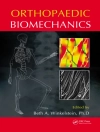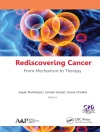The current concept of dystonic movement connects the abnormal function of somatosensory pathways and somatosensory analyzers with the dystonic performance of motor action, which is based on the abnormality of sensorimotor integration. This concept is reflected not only in idiopathic dystonia, but also in secondary and symptomatic dystonias. This book will give a comprehensive account of the history of the terms dystonia and dystonic, the physiology of dystonic movement and the genetics and clinical appearance of primary and secondary dystonias. Taking into consideration latest research findings, Dystonia and Dystonic Syndromes offers an in-depth discussion of current treatment options available for dystonia, including pharmacotherapy, surgery and neurorehabilitation. Therefore, it serves as a valuable reference for practitioners in the fields of neurology, neurosurgery, psychiatry and neuroradiology as well as for neuroscientists.
Tabla de materias
Part I. Pathophysiology and nosology of dystonia.- Dystonia: History of the term and syndrome.- Physiology of dystonia.- Genetics of dystonia.- Nosology and classification of dystonia.- Secondary dystonias.- Dystonia – parkinsonism syndromes.- Dystonia in multiple system atrophy and progressive supranuclear palsy.- Psychogenic dystonia.- Part II. Treatment of dystonia.- Pharmacological treatment of dystonia.- Botulinum toxin treatment of dystonia.- Long-term Bo NT treatment of dystonia.- Brain plasticity in dystonia.- Surgical treatment of dystonia.- Indications of deep brain stimulation in dystonia.- Pitfalls of deep brain stimulation in dystonia.- Neurorehabilitation in dystonia.- Dystonia in Art: The Impact of Psychiatric and Neurological Disease on the Work of the Sculptor F.X. Messerschmidt.











